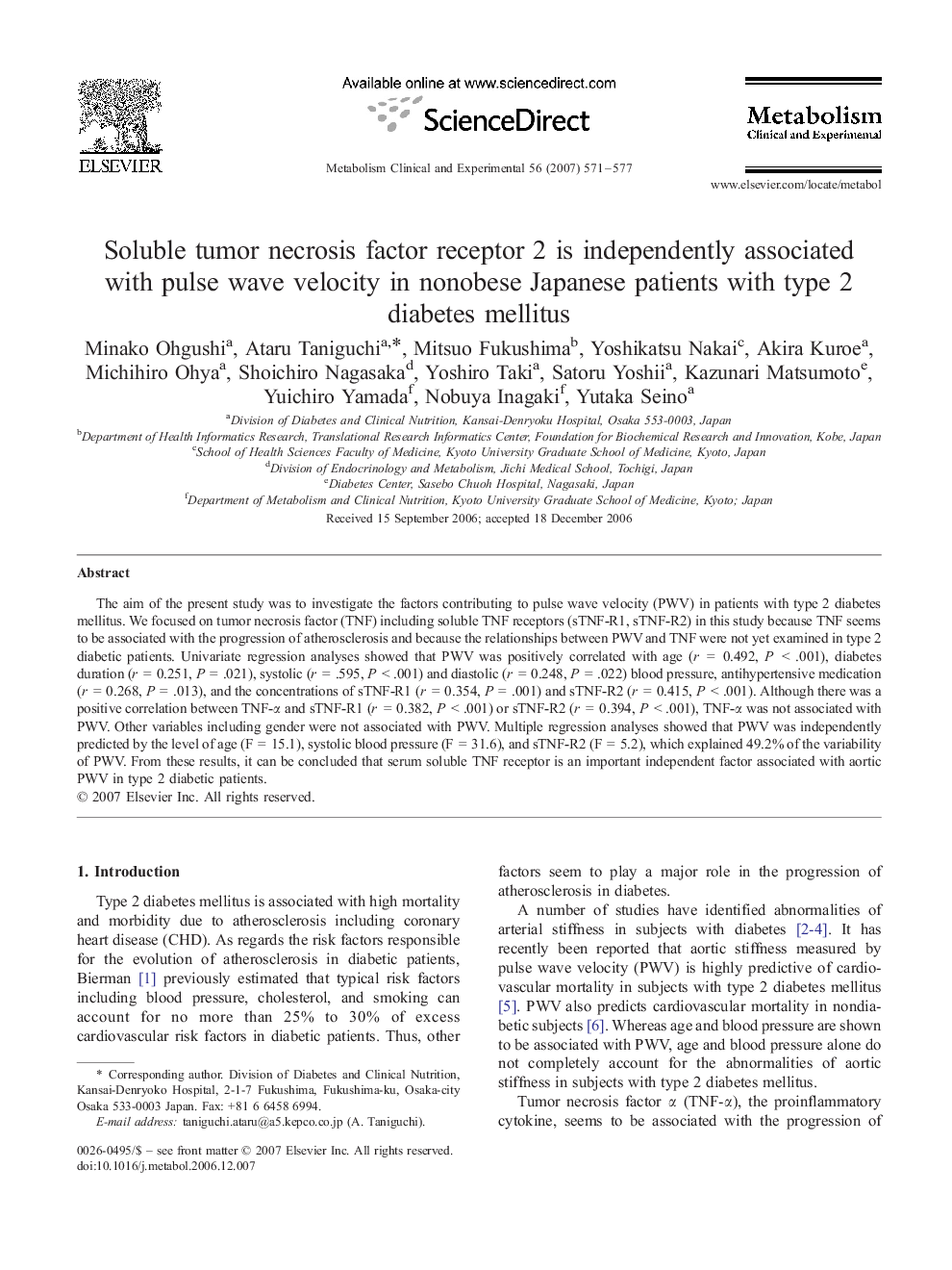| Article ID | Journal | Published Year | Pages | File Type |
|---|---|---|---|---|
| 2807834 | Metabolism | 2007 | 7 Pages |
The aim of the present study was to investigate the factors contributing to pulse wave velocity (PWV) in patients with type 2 diabetes mellitus. We focused on tumor necrosis factor (TNF) including soluble TNF receptors (sTNF-R1, sTNF-R2) in this study because TNF seems to be associated with the progression of atherosclerosis and because the relationships between PWV and TNF were not yet examined in type 2 diabetic patients. Univariate regression analyses showed that PWV was positively correlated with age (r = 0.492, P < .001), diabetes duration (r = 0.251, P = .021), systolic (r = .595, P < .001) and diastolic (r = 0.248, P = .022) blood pressure, antihypertensive medication (r = 0.268, P = .013), and the concentrations of sTNF-R1 (r = 0.354, P = .001) and sTNF-R2 (r = 0.415, P < .001). Although there was a positive correlation between TNF-α and sTNF-R1 (r = 0.382, P < .001) or sTNF-R2 (r = 0.394, P < .001), TNF-α was not associated with PWV. Other variables including gender were not associated with PWV. Multiple regression analyses showed that PWV was independently predicted by the level of age (F = 15.1), systolic blood pressure (F = 31.6), and sTNF-R2 (F = 5.2), which explained 49.2% of the variability of PWV. From these results, it can be concluded that serum soluble TNF receptor is an important independent factor associated with aortic PWV in type 2 diabetic patients.
